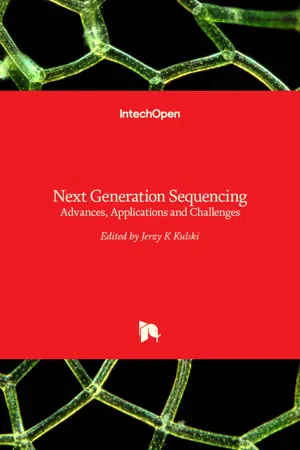
- 464 pages
- English
- PDF
- Available on iOS & Android
About this book
Next generation sequencing (NGS) has surpassed the traditional Sanger sequencing method to become the main choice for large-scale, genome-wide sequencing studies with ultra-high-throughput production and a huge reduction in costs. The NGS technologies have had enormous impact on the studies of structural and functional genomics in all the life sciences. In this book, Next Generation Sequencing Advances, Applications and Challenges, the sixteen chapters written by experts cover various aspects of NGS including genomics, transcriptomics and methylomics, the sequencing platforms, and the bioinformatics challenges in processing and analysing huge amounts of sequencing data. Following an overview of the evolution of NGS in the brave new world of omics, the book examines the advances and challenges of NGS applications in basic and applied research on microorganisms, agricultural plants and humans. This book is of value to all who are interested in DNA sequencing and bioinformatics across all fields of the life sciences.
Frequently asked questions
- Essential is ideal for learners and professionals who enjoy exploring a wide range of subjects. Access the Essential Library with 800,000+ trusted titles and best-sellers across business, personal growth, and the humanities. Includes unlimited reading time and Standard Read Aloud voice.
- Complete: Perfect for advanced learners and researchers needing full, unrestricted access. Unlock 1.4M+ books across hundreds of subjects, including academic and specialized titles. The Complete Plan also includes advanced features like Premium Read Aloud and Research Assistant.
Please note we cannot support devices running on iOS 13 and Android 7 or earlier. Learn more about using the app.
Information
Table of contents
- Next Generation Sequencing - Advances, Applications and Challenges
- Contents
- Preface
- Section 1 Genomics, Transcriptomics and Methylomics: Tools and Applications
- Section 2 Next Generation Sequencing of Microorganisms
- Section 3 Next Generation Sequencing of Agricultural Plants
- Section 4 Next Generation Sequencing in Humanomics